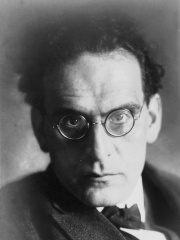
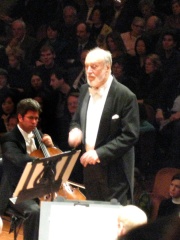
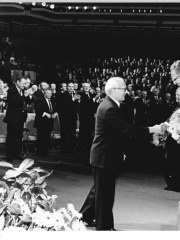
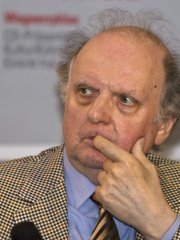
The Most Famous
CONDUCTORS from Poland
This page contains a list of the greatest Polish Conductors. The pantheon dataset contains 128 Conductors, 5 of which were born in Poland. This makes Poland the birth place of the 10th most number of Conductors behind Hungary, and Czechia.
Top 5
The following people are considered by Pantheon to be the most legendary Polish Conductors of all time. This list of famous Polish Conductors is sorted by HPI (Historical Popularity Index), a metric that aggregates information on a biography's online popularity.

1. Otto Klemperer (1885 - 1973)
With an HPI of 68.08, Otto Klemperer is the most famous Polish Conductor. His biography has been translated into 35 different languages on wikipedia.
Otto Nossan Klemperer (German: [ˌɔto ˈklɛmpəʁɐ] ; 14 May 1885 – 6 July 1973) was a German conductor and composer, originally based in Germany, and then the United States, Hungary and finally, Great Britain. He began his career as an opera conductor, but he was later better known as a conductor of symphonic music. A protégé of the composer and conductor Gustav Mahler, from 1907 Klemperer was appointed to a succession of increasingly senior conductorships in opera houses in and around Germany. Between 1929 and 1931 he was director of the Kroll Opera in Berlin, where he presented new works and avant-garde productions of classics. He was from a Jewish family, and the rise of the Nazis caused him to leave Germany in 1933. Shortly afterwards he was appointed chief conductor of the Los Angeles Philharmonic, and guest-conducted other American orchestras, including the San Francisco Symphony, the New York Philharmonic and later the Pittsburgh Symphony, which he reorganised as a permanent ensemble. In 1939 Klemperer was diagnosed with a brain tumour. An operation to remove it was successful, but left him lame and partly paralysed on his right side. Throughout his life he had bipolar disorder, and after the operation he went through an intense manic phase of the illness and then a long spell of severe depression. His career was seriously disrupted and did not fully recover until the mid-1940s. He served as the musical director of the Hungarian State Opera in Budapest from 1947 to 1950. Klemperer's later career centred on London. In 1951 he began an association with the Philharmonia Orchestra. By that time better known for his readings of the core German symphonic repertoire than for experimental modern music, he gave concerts and made almost 200 recordings with the Philharmonia and its successor, the New Philharmonia, until his retirement in 1972. His approach to Mozart was not universally liked, being thought of by some as heavy, but he became widely considered the most authoritative interpreter of the symphonies of Beethoven, Brahms, Bruckner and Mahler.

2. Kurt Masur (1927 - 2015)
With an HPI of 66.40, Kurt Masur is the 2nd most famous Polish Conductor. His biography has been translated into 34 different languages.
Kurt Masur (German pronunciation: [ˈkʊʁt maˈzuːɐ̯]; 18 July 1927 – 19 December 2015) was a German conductor. Called "one of the last old-style maestros", he directed many of the principal orchestras of his era. He had a long career as the Kapellmeister of the Leipzig Gewandhaus Orchestra, and also served as music director of the New York Philharmonic for about ten years. He made many recordings of classical music with major orchestras. Masur is also remembered for his actions to support peaceful demonstrations against the East German government in the 1989 demonstrations in Leipzig; those protests were part of the events leading up to the fall of the Berlin wall.

3. Kurt Sanderling (1912 - 2011)
With an HPI of 60.45, Kurt Sanderling is the 3rd most famous Polish Conductor. His biography has been translated into 17 different languages.
Kurt Sanderling, CBE (Russian: Курт Игнатьевич Зандерлинг, romanized: Kurt Ignatyevich Zanderling; 19 September 1912 – 18 September 2011) was a German conductor.

4. Marek Janowski (b. 1939)
With an HPI of 59.75, Marek Janowski is the 4th most famous Polish Conductor. His biography has been translated into 19 different languages.
Marek Janowski (born 18 February 1939 in Warsaw) is a Polish-born German conductor.
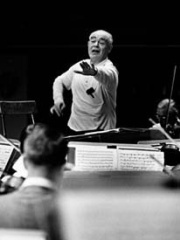
5. Paul Kletzki (1900 - 1973)
With an HPI of 59.41, Paul Kletzki is the 5th most famous Polish Conductor. His biography has been translated into 17 different languages.
Paul Kletzki (born Paweł Klecki; 21 March 1900 – 5 March 1973) was a Polish conductor and composer.
People
Pantheon has 5 people classified as Polish conductors born between 1885 and 1939. Of these 5, 1 (20.00%) of them are still alive today. The most famous living Polish conductors include Marek Janowski. The most famous deceased Polish conductors include Otto Klemperer, Kurt Masur, and Kurt Sanderling.
Living Polish Conductors
Go to all RankingsDeceased Polish Conductors
Go to all RankingsOtto Klemperer
1885 - 1973
HPI: 68.08
Kurt Masur
1927 - 2015
HPI: 66.40
Kurt Sanderling
1912 - 2011
HPI: 60.45
Paul Kletzki
1900 - 1973
HPI: 59.41
Overlapping Lives
Which Conductors were alive at the same time? This visualization shows the lifespans of the 4 most globally memorable Conductors since 1700.

